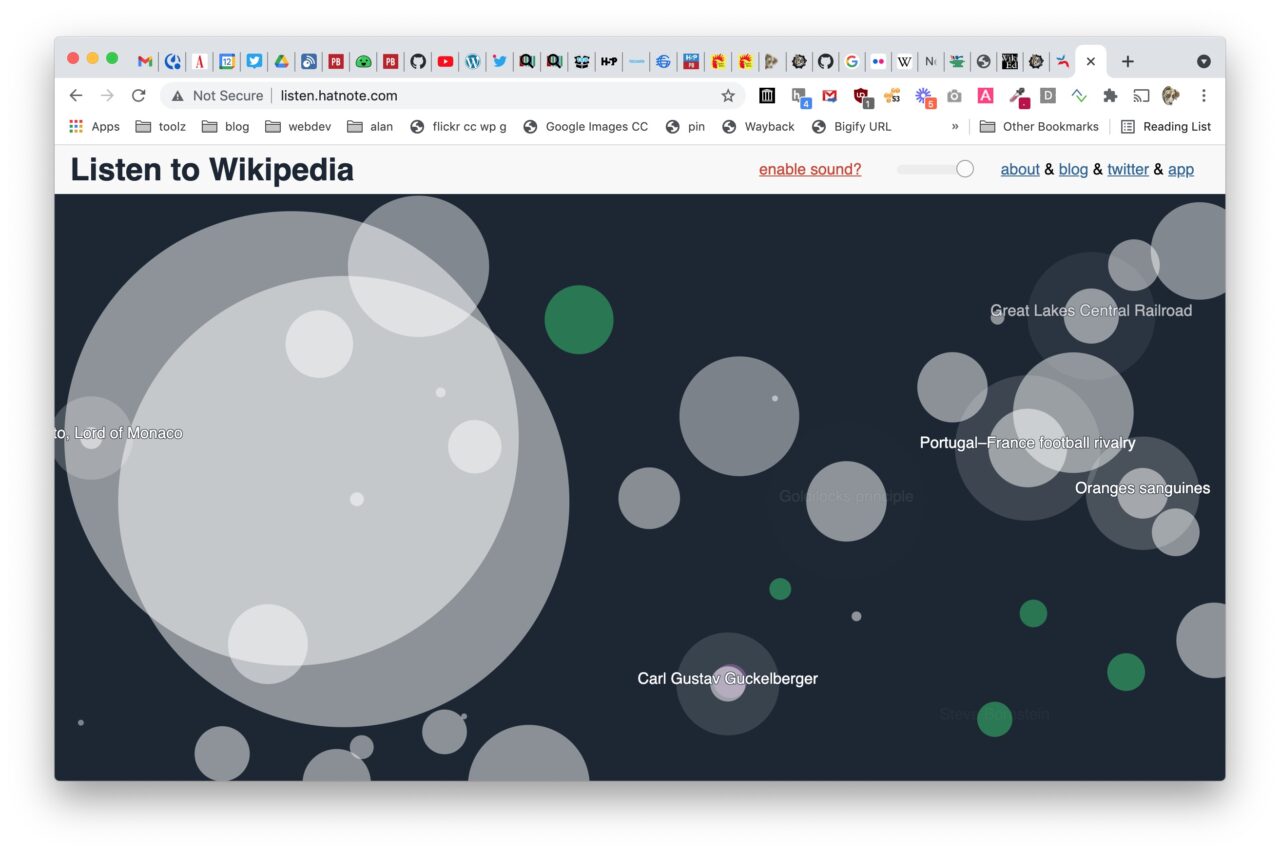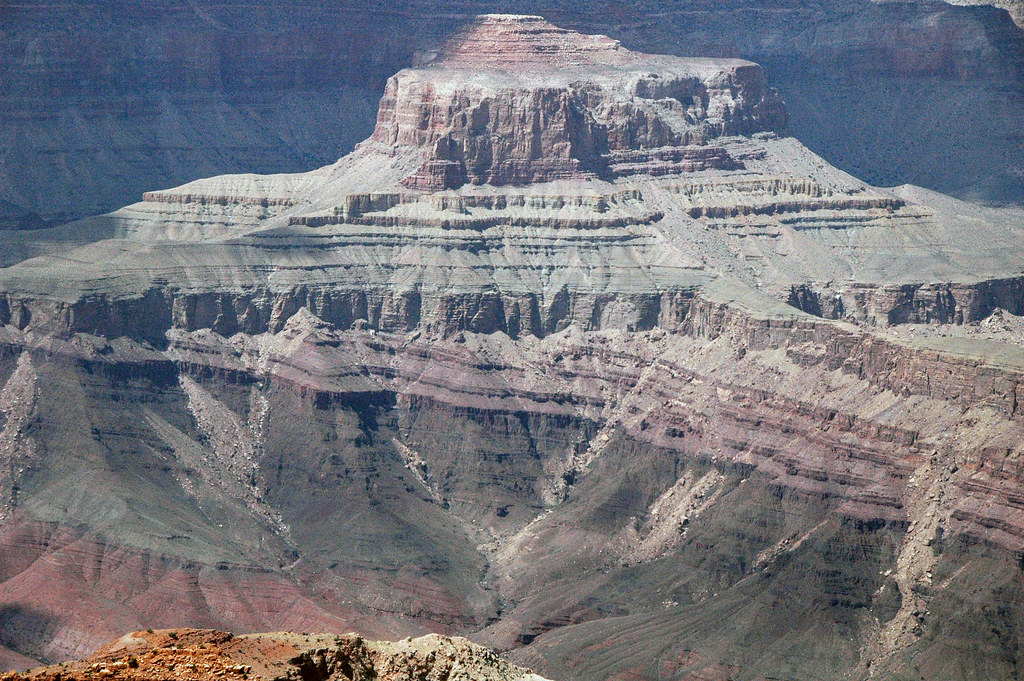There’s no magic beyond my fervent clutch to the discarded in lieu of social media the fully functional tools of RSS and News readers. But I will perk up at a geological metaphor in a blog post.
Thus it was Irwin Devries’s dusting off of the publish button on his blog with a great new post on his experience in a Wiki Scholar’s workshop.
The sun is shining, I’m fully vaxxed, and I think it’s time to get back to the blog. I suspect future digital archaeologists will uncover one of those interesting sedimentary lines in the blogocene indicating a world-wide gap in digital ink production during the Covid-19 Era. Anyhow, that’s the excuse for my extended pause in writing. But onwards.
Yes, I would say the Blogocene is worthy of maybe being considered an Era in the Internet Time scale. But for the longer view, maybe look to the digital geologists as what he describes is more properly an Unconformity (and yes the link to Wikipedia is deliberate, well and it’s authoritative here). And I might suggest Irwin’s reference as a disconformity, just a period of non deposition of new stuff into the record, rather than a longer period of erosion indicated by a Nonconformity or Angular Unconformity.
All of this is really a digression.
Irwin describes his 6 week Wikischolars experience coordinated via GO-GN with the output being his (an well as others I am seeing in Twitter) produced Wikipedia page. The fact that the upcoming virtual Wikimania event (I registered, did you?) is marking the 20th layer of year time for Wikipedia suggests the wiki idea has solidified into the Internet layers of record.
Just tip toeing into the WikiTeahouse Irwin linked to was rather mindblowing to see the level of interaction happening on a regular basis– although maybe my all time favorite thing to wow people with is Listen to Wikipedia where you can see and hear in realtime the life beats of Wikipedia activity.

There is so much goodness happening in the educational, open pedagogy projects of contributing to Wikipedia, nothing I can argue with.
Yet, sometimes I think the articles get all the focus when there are so many more ways to contribute. This was something I helped assemble for the MuralUDG project in 2018, trying to point at the other means of being part that was not limited to writing/editing Wikipedia articles (though we were fortunate to have the great Jon Beasley-Murray from UBC visit us via web video to share his Murder, Mayhem, madness experience, which I mark as a significant unit in the Wikicence Epoch).
Frankly I think Adding media to Wikimedia Commons is one of the best, low stakes entry points. They have so many ways to find topics needing imagery. But all of this leads me to the small unheralded corners that really is a foundation layer of the Wikicence — Wikidata.
For an understanding, one of the best resources from the University of Edinburgh is the Wikidata Basics resource (cough, yes a SPLOT) (all roads here lead past SPLOTs).
I always thought one of the best things out there to find Something I Can Contribute is Wikishootme. It is wonderfully simple. It can show your current location (or anywhere to choose, explore), and provides a map with green dots indicating a location where Wikidata has images and red dots indicating where it needs them.
So you can find something in walking, driving distance, go there, take a photo, and add to Wikidata. Why not create a project of turning red dots green? For some reason the tool geolocates me a bit far west north of my actual location, but here’s an area of Alberta north of Saskatoon that has a lot of red dots.
If you click a red dot, it can even generate map directions to the location. If you have an image for the place, and you have a Wikipedia login, you can upload your photo, and turn a red dot green.
Reading Irwin’s post flashes me back to 2014 when I was there at TRU on an Open Learning Fellowship. I saw a tweet from Martin Hawksey about Wikishootme. When I see something like this, my impulse is to just to click a like button or retweet, I want to try it. And literally, right across the street I found something in Wikishoot me I could contribute, a picture of the location of radio station CFBX
The photo I uploaded to Wikidata went into the database, turned the red dot green, and is there in Wikimedia commons.
But maybe a use of Wikidata that really made sense, especially for that work in Guadalajara, is in this tweet.
This is a dynamic map which still works today, via a link to the query language of Wikidata to show birthplace locations of important Latin American women, who have articles in English Wikipedia but not in the Spanish language Wikipedia Doesn’t this scream out to anyone as an evenue into Open Pedagogy that is not just Write an Open Textbook?
And the map is just as red in 2021 as it was in 2018.
I really want to learn more about the Wikidata query world. There are examples yto can start with, but maybe this looks a bit frightening?

But there is a slightly more friendly interface, so I was able to start with a randomly not so interesting query for streets named after important people that looked in France, and just nudged it slightly to make the query return results in Canada.

Now this is pretty trivial- but it is the same tool that generated that map of Latin American women that were not represented in Spanish Language Wikipedia.
And that nudges me somewhat to want to dig in a little more so I can maybe entice others.
The Wikicence Era/Epoch is now. And there are so many ways to add to this time period, so there is a stratigraphic record, not a period of loss, erosion. I’m keen to here of more human entry paths into Wikidata and it’s queries.
Featured Image:




That area of Alberta looks an awful lot like an area of Saskatchewan…
That was a test to see if anyone was reading. I gamed ya! Hah! No I must have misread my map. It’s weird where it picks my location.
I really dig this tour of conformities, nonconformities and various other formities. Until now I thought of these only as cultural descriptions, but seeing them placed in the natural world — the geologic world no less — really makes my day and helps normalize how I feel about a lot of things. On my daily walks through our local Green Timbers Urban Forest I occasionally take a diversion down Quibble Creek Trail, where a glacial erratic boulder rests in timeless silence. I stop there for a few minutes, feeling a sense of wonder, pondering the vastness of geologic time and the glaciers that once covered this land. It’s a good reset. After seeing your post, I followed through with your prompts and added a photo of the erratic to Wikipedia: https://en.wikipedia.org/wiki/Glacial_erratic